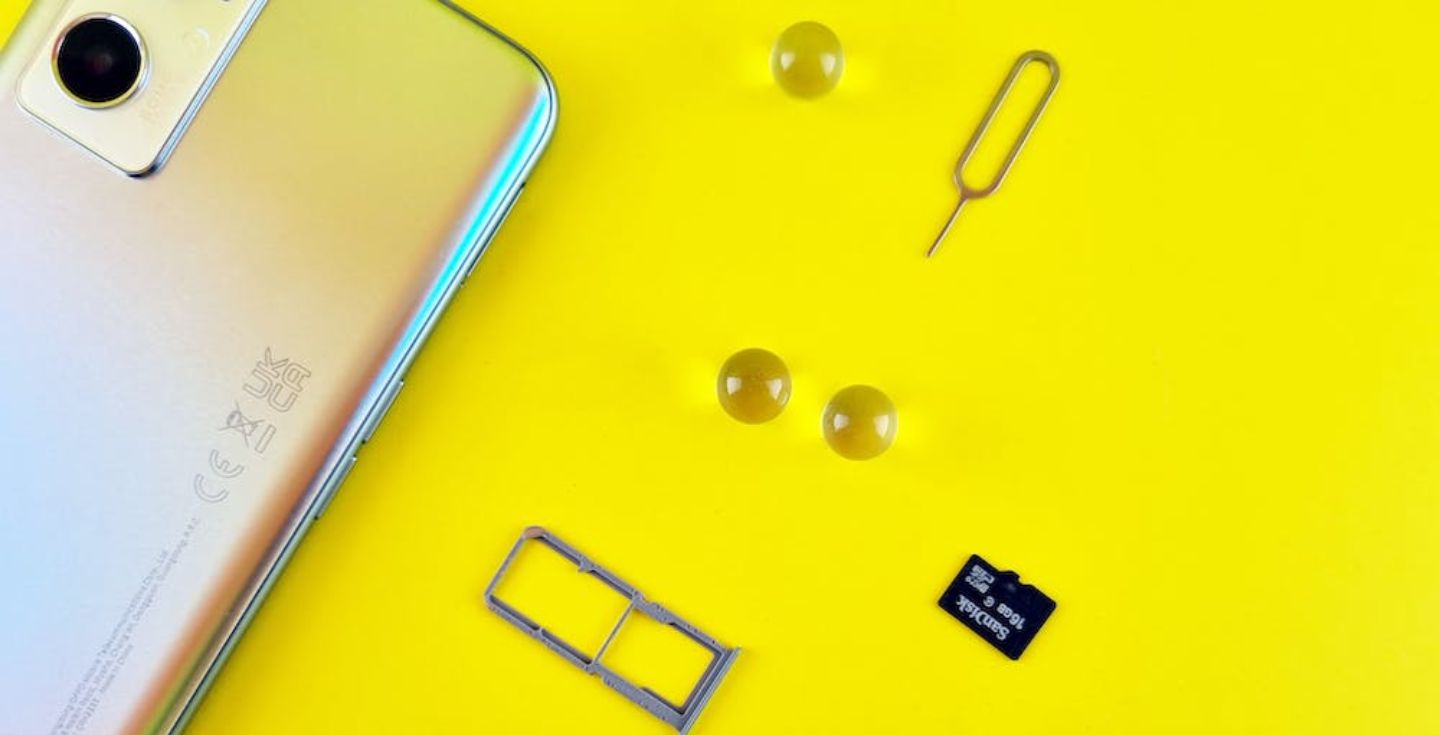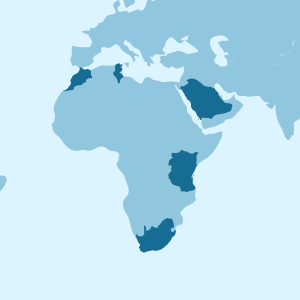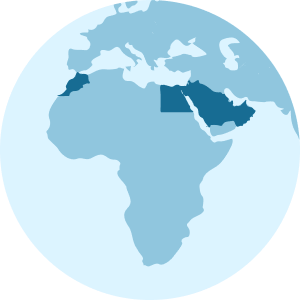International SIM card for travel: 2025 guide
International SIM cards offer an easy way to stay connected abroad without roaming fees. Discover how they work, their benefits, and top providers.
An international SIM card is one of the most convenient ways to stay connected while traveling abroad without paying expensive roaming fees. A travel SIM lets you use mobile data and stay in touch like you would at home.
Today, travelers can choose between traditional physical SIM cards, digital eSIMs (which don’t require a physical chip), and other alternatives like pocket WiFi or roaming services from local operators. But not all options offer the same level of simplicity, coverage, or cost-effectiveness.
In this guide, we’ll help you understand how international SIM cards work, what makes them a better choice than roaming or pocket WiFi, and which providers offer the best data plans.

What is an international SIM card, and how does it work?
An international SIM card is a mobile SIM that works across multiple countries, allowing you to stay connected abroad without switching cards at every destination. Instead of being tied to a single national carrier, these SIMs operate through agreements with multiple networks worldwide.
This means you can access mobile data, calls, or SMS (depending on the plan) using just one SIM card while you travel.
Unlike a local SIM, which only works in one country and often requires in-person registration, an international SIM is designed for multi-country use, making it a more flexible and time-saving option.
There are two main types of international SIM cards:
- Physical SIM cards, which are inserted into your phone like any regular SIM.
- eSIMs, or embedded SIMs, which are activated digitally via a QR code.
Both options are prepaid, easy to buy online, and can be used immediately upon arrival.
Benefits of using an international SIM card when traveling
Choosing an international SIM card over traditional options like roaming or pocket WiFi comes with clear, practical advantages. Especially if you value convenience, savings, and flexibility.
- Avoid high roaming fees: With an international SIM, you pay a fixed upfront cost and skip the surprise charges that often come with activating roaming services through your local carrier.
- Connect across multiple countries with one plan: Travel through Europe, Asia, or the Americas without switching SIMs. One card or eSIM keeps you connected throughout your journey, no matter how many borders you cross.
- Activate it in minutes. No stores, no paperwork: Setup is 100% digital, especially with eSIMs. Just scan a QR code, and you’re ready to go. There is no need to visit a store or provide local ID, which is often required when buying a SIM locally.
- Keep your WhatsApp number active: In dual-SIM phones, international SIMs work alongside your local SIM, so you can continue using your original WhatsApp number without interruption.
- Choose the plan that fits your trip: Whether you’re going away for five days or three months, international SIM providers let you select the exact duration and data allowance you need. No long-term contracts are required.
- Hotspot and tethering supported on most plans: Share your connection with a laptop, tablet, or travel companion. Many international SIM cards include tethering support, which is often blocked in standard roaming.
What happens to my phone when I insert an international SIM card?
When you insert an international SIM card into your phone, your device connects to a supported local network in your destination country. The SIM automatically configures your phone to use mobile data and make calls or send texts if included in your plan.
If you’re using a physical SIM card, it will temporarily replace your local number while it’s active.
If you’re using an eSIM and your phone supports dual SIM functionality, your local SIM stays active in the background. This means you can keep your original number for calls or messages while using mobile data from the travel SIM.
To avoid billing surprises, it’s best to disable data on your local SIM and ensure your phone is set to use the international SIM for mobile data. Most phones let you manage this in the SIM or network settings.
Travel eSIM vs. physical international SIM: Which is better for traveling internationally?
Both physical SIM cards and eSIMs allow you to stay connected while traveling, but the right choice depends on your phone, destination, and how you plan to use mobile data. Here’s a quick comparison to help you decide:
| Feature | Travel eSIM | Physical international SIM |
| Ease of purchase | ✅ Instant delivery by email | ❌ Requires shipping or in-store pickup |
| Activation | ✅ Activate by scanning a QR code | ❌ Insert the card manually and follow the setup steps |
| Coverage | ✅ Multi-country plans available | ✅ Multi-country plans available |
| Phone compatibility | ❌ Only on eSIM-compatible, unlocked devices | ✅ Works on most unlocked phones |
| SIM slot required | ✅ No physical slot needed | ❌ Requires an available SIM slot |
| Data sharing (hotspot) | ✅ Supported on most plans | ✅ Supported on most plans |
| Dual SIM support | ✅ Can work alongside your local SIM | ❌ Replaces your local SIM temporarily |
Tip: If your phone supports eSIM, it’s usually the better choice for international travel. It’s faster, easier to set up, and doesn’t require a physical card.
Where to buy a SIM card for international travel
You can buy a SIM card for international travel through different channels, but not all offer the same convenience, price, or availability.
1. Online stores (recommended)
Buying your SIM card online is the most convenient option for international travelers.
Pros:
- Instant delivery (for eSIMs) via email.
- Easy to compare plans by region, duration, or data volume.
- No paperwork or ID registration required in most cases.
- Accessible in your native language.
Cons:
- Requires an internet connection and a compatible phone for eSIM activation.
- For physical SIMs, shipping can take several days.
Best for: Travelers who prefer to set everything up before departure.
2. Airport kiosks or vending machines
Many airports sell SIM cards through kiosks or vending machines, usually near the arrivals area.
Pros:
- Available immediately upon landing.
- Staff may assist with setup.
Cons:
- Limited provider and plan options.
- Often more expensive than online prices.
- Instructions or staff may only be in the local language.
- Lines or availability issues at busy airports.
Best for: Travelers who didn’t plan ahead and need a quick solution on arrival.
3. Local stores in the destination country
Mobile carriers or electronics shops in your destination often sell local SIM cards.
Pros:
- May offer good rates for long stays in one country.
- Some plans include local calls or SMS.
Cons:
- Requires ID or passport for registration.
- The entire process (setup, payment, support) may be in the local language.
- Not ideal for multi-country trips.
- It can take time to find a store after arrival.
Best for: Long-term travelers staying in a single country.
Is it a good idea to buy a SIM card at the airport?
Buying a SIM card at the airport can be convenient, but it’s not always the smartest option, especially regarding price, plan flexibility, or customer support.
When it makes sense:
- You need immediate connectivity and didn’t set up an eSIM in advance.
- You’re traveling to one country and just need basic mobile data.
- You find a reliable kiosk with English-speaking staff and clear setup instructions.
What to watch out for:
- Higher prices than online stores, with limited data or short validity.
- Fewer plan options for multi-country travel.
- Language barriers and a lack of in-depth support if you face activation issues.
- Stock or availability issues during peak travel seasons.
Bottom line: Buying at the airport works in a pinch, but you’ll likely get more value, better data plans, and a more straightforward setup process by purchasing your international SIM online before your trip.
Best international SIM providers in 2025
Not all international SIM cards offer the same experience. The best providers combine broad regional or global coverage, easy activation, reliable customer support, and, ideally, unlimited data plans without hidden limits or throttling.
Holafly: International prepaid eSIM
Holafly specializes in prepaid eSIMs with unlimited data, available for over 200 destinations. Our eSIMs are ideal for short or medium-length trips, especially in regions like:
- Europe (40 countries, including the UK, Spain, France, and Italy)
- North America (USA, Canada, Mexico)
- Asia (Japan, South Korea, Thailand, and more)
- Latin America, Oceania, and Africa (multi-country coverage per region)
Why choose Holafly:
- Instant activation via QR code.
- Unlimited data plans with no daily limits in most destinations.
- 24/7 support in multiple languages, including English and Spanish.
- Easy top-up system for extensions or additional data.
Best for: Tourists, business travelers, or anyone who wants a fast setup and reliable connectivity from day one.
Holafly Connect: Monthly international eSIM
Holafly Connect offers a monthly global eSIM that works in over 170 countries for frequent travelers, remote workers, or digital nomads.
Available plans:
- Unlimited plan: $64.90/month (unlimited data + hotspot).
- 25 GB plan: $49.90/month (25 GB + 25 GB hotspot).
- 10 GB plan: $39.90/month (data only).
Why choose Holafly Connect:
- One Global eSIM for all your trips. No need to switch by region.
- Perfect for long-term travel or work abroad.
- Up to 5G speeds in supported destinations.
- Manage your plan via a user-friendly online dashboard.
Best for: Digital nomads, long-term travelers, or people working across borders.
Orange Holiday Europe
Orange is a well-known European carrier that offers a physical prepaid SIM card for travelers visiting EU countries.
The Orange Holiday Europe SIM includes:
- Up to 500 GB of mobile data.
- Include calls and SMS.
- Validity up to 90 days.
- Works in over 30 European countries.
Why choose Orange Holiday Europe:
- Includes calls and SMS, which are often excluded from eSIM plans.
- Ideal for travelers who need a local number during their trip.
- Can be purchased online or at select airport kiosks.
Best for: European tourists or business travelers needing calls, SMS, and data.
FAQs about international SIM cards
Yes, when you use a physical international SIM card, your phone will use the number assigned to that SIM. However, you can still use apps like WhatsApp or Telegram with your original number, as these accounts are tied to your app settings, not the SIM.
If you’re using an eSIM alongside your local SIM (on a dual-SIM phone), you can keep your original number active for calls and texts while using mobile data from the travel SIM.
Yes, many providers offer unlimited data plans with international SIM cards or eSIMs. For example, Holafly provides unlimited data in over 200 destinations, with no daily caps or hidden restrictions in most plans.
If your SIM doesn’t connect, try restarting your phone and checking that data roaming is enabled. You can also manually select a local network in your phone’s settings. If you’re using an eSIM, make sure it’s set as the active mobile data line.
Most providers offer 24/7 chat or email support to help quickly resolve setup or connection issues.
Conclusion: Choose the best way to stay connected while traveling abroad
Staying online while traveling doesn’t have to be complicated or expensive. Whether you’re visiting one country or crossing several borders, using an international SIM card is one of the smartest ways to avoid roaming fees and get reliable mobile data from the moment you land.














































 Pay
Pay  Language
Language  Currency
Currency 


















 No results found
No results found














